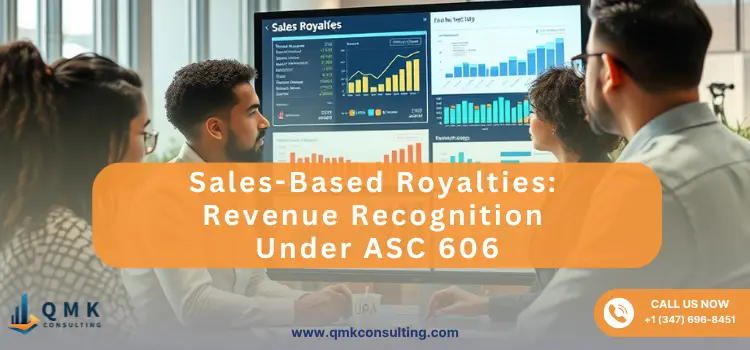
May 30, 2025 |Franchise Solutions


Understanding how to properly recognize sales-based royalties under ASC 606 is crucial for many businesses, especially in franchising and licensing industries. Whether you’re a franchisor collecting royalties from restaurant franchisees or a biotech firm licensing intellectual property, knowing the nuances of ASC 606 can help you stay compliant and optimize your revenue reporting.
Revenue recognition is more than just clicking boxes; it is about correctly capturing the economic realities of your company's activities. Sales-based royalties often represent a significant portion of revenue for franchisors and licensors. Misapplying ASC 606 rules can lead to misstated financials, regulatory scrutiny, and even costly restatements.
ASC 606, the revenue recognition standard under U.S. GAAP, sets out a five-step model that businesses must follow. Sales-based royalties, however, have special considerations within this framework that require careful attention.
Simply put, sales-based royalties are payments calculated as a percentage of sales or usage of a product or service. They are common in agreements where one party licenses intellectual property (IP) or a brand to another.
Common examples include:
These royalties are variable consideration because the amount received depends on the licensee’s sales performance.
Unlike fixed fees, sales-based royalties depend on future sales or usage, making revenue recognition more complex. ASC 606 requires that revenue from these royalties be recognized only when the related sales or usage occur — not upfront or on contract signing.
For example, a franchisor earning 6% royalty on monthly gross sales recognizes revenue monthly when franchisees report sales, not when the franchise agreement is signed. Similarly, a biotech company licensing IP recognizes royalty revenue only after receiving confirmed sales data from its licensee.
ASC 606 establishes a clear five-step process for revenue recognition:
ASC 606 makes an exception for sales-based royalties associated with intellectual property licensing. To qualify:
If these requirements are met, revenue recognition is postponed until either the sale or usage happens or the royalty performance obligation is met.
Franchise Example:
A U.S. restaurant franchisor earns a 6% royalty on monthly gross sales from franchisees. Revenue is recognized monthly when sales reports are submitted, reflecting actual sales, not at contract signing.
Biotech Licensing Example:
A U.S. drug developer licenses IP to a global pharmaceutical company with a 4% sales royalty. Revenue is recognized only upon confirmation of sales data, ensuring accuracy and compliance.
Companies must disclose:
These disclosures provide transparency to investors and regulators about how royalty revenue is recognized.
If you’re a franchisor or licensor navigating ASC 606 sales-based royalty recognition, QMK Consulting offers specialized accounting expertise tailored to your industry. Based in New York City, we focus exclusively on franchise accounting — not franchise audits — helping you stay compliant while optimizing your financial reporting.
Book a free profit and cash flow analysis with Mohamed Karmous, our franchise accounting expert and restaurant accounting advisor. Let us help you uncover opportunities to improve profitability and cash flow while ensuring ASC 606 compliance.
Contact QMK Consulting today and take the first step toward smarter franchise accounting.